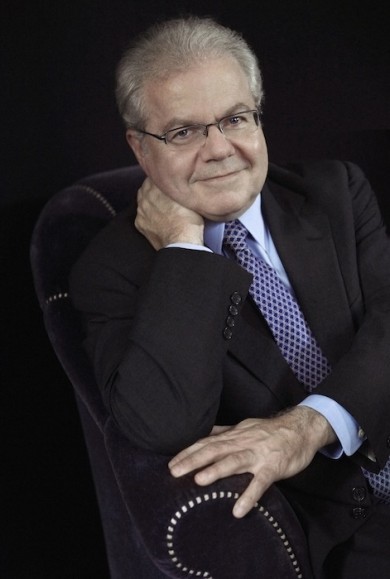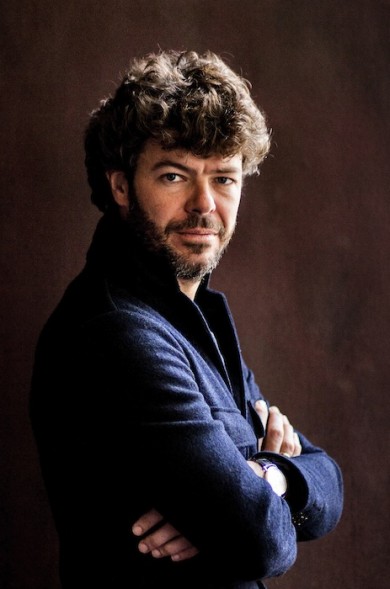Ax, Heras-Casado deliver grandeur and excitement with New World Symphony

Emanuel Ax performed Beethoven’s “Emperor” concerto Saturday night with the New World Symphony. Photo: Lisa-Marie Mazzucco
As he walked on stage Saturday night, white-haired and slightly bent, Emanuel Ax may not have seemed an obvious candidate to perform one of the world’s most heroic piano concertos.
Yet when he sat at the keyboard at the Arsht Center in Miami, he rolled out the sweeping opening of the Beethoven’s Piano Concerto No. 5, known as the “Emperor,” with an authority and grandeur few pianists could match. What followed was an exemplary performance of this popular work, big and extroverted, but with a feeling for nuance and lyricism.
Ax performed with the New World Symphony led by Pablo Heras-Casado, principal conductor of the Orchestra of St. Luke’s in New York. The the Spanish conductor has served as guest conductor with many of the world’s great orchestras, as well as the Metropolitan Opera.
At the age of 66, Ax has retained his formidable technique. The outer movements of the concerto were exhilarating expressions of Beethoven at his most life-affirming, played with a sturdy confidence that suited the music. Particularly memorable was his playing of a first-movement passage in which he plays the main theme with his right hand against a thundering accompaniment of downward scales in his left.
But playing Beethoven is not just, or mainly, a matter of playing loud and fast. Ax played with subtle tone colors. He brought a jeweler’s precision to a minor-key interlude in the first movement, drawing from the piano as close an imitation of woodwind instruments as you’re likely to hear. And the slow movement was a masterpiece of sustained, songlike playing. Ax will be back in South Florida March 22 for a recital at the Broward Center in Fort Lauderdale.
The orchestra gave a robust, but compact accompaniment. Heras-Casado appeared to take particular pains to emphasize the moments of quiet tension before the clouds parted, making the concerto’s big major-key themes come off as that much more affirmative. Strings gave a glowing account of the opening theme of the slow movement.
As an encore, Ax gave a serene and big-toned performance of one of Beethoven’s most famous Adagios, the second movement of the Piano Sonata No. 8, known as the “Pathetique.”
The concert opened with Bartók’s Dance Suite, a 1923 work that draws inspiration from the folk music of southeastern Europe.
Heras-Casado led a supple performance, speeding up and slowing down the orchestra’s with a dance-band leader’s sense of rhythm. This folk-inspired music, passed through the prism of Bartók’s classical training, came off as neither too pristine nor too raucous. The orchestra, with particularly muscular playing in strings and brass, gave a polished performance that maintained an earthy, rhythmic spirit.
When the New World Symphony crosses Biscayne Bay to perform at the Arsht Center, it always programs celebrity soloists. Many people had apparently shown up only to hear Ax, judging from the number of empty seats after intermission. They missed a resounding performance of one of Dvořák’s greatest orchestral works, the Symphony No. 7, a piece played less frequently that the two symphonies that would follow.
This music made the most of New World’s plush, luxuriant orchestra textures. Strings were rich but with a searing edge when required. Brass were weighted and brilliant, winds glowing and warm.
In the stormy opening movement, Heras-Casado demanded a wide dynamic range from the orchestra–from pianissimo to blaring–that gave great power to climaxes when they came. A few times some of the richness of Dvořák’s orchestra writing got buried under the weight of the brass section, particularly the strings, but in all it was a dramatic performance, with a frenetic excitement at the coda.
The folk-inspired Scherzo was pointed and graceful, played with verve and dash. The last movement profited from the sense of drama that Heras-Casado displayed in the Beethoven concerto, as he developed moment of quiet tension and then unleashed the orchestra for a ferocious crescendo.
Posted in Performances
Leave a Comment
Sun Mar 6, 2016
at 11:36 am
No Comments






